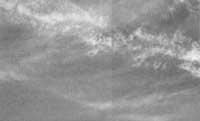European satellite ERS-1 for climate study
1991/01/01 Elhuyar Zientzia Iturria: Elhuyar aldizkaria
For years satellites are looking from the sky to Earth and increasingly sending more data about our atmosphere. The German Research Department (DLR) at its center in Oberpfaffenhofen tries to evaluate this data.
The new satellite image database will soon be launched and experts expect to know more quickly the complicated climate phenomena. So far there were three satellites that sent ecologically analyzable data: Meteorological NOAA and remote observation satellites called LANDSAT and SPOT. In short, however, the launch of the European Remote-Sensing Satellito or ERS-1 and the use of the amount of data to be sent to Earth will entail the consolidation of its infrastructure.

The new satellite has six instruments that record very different parameters. Sea surface, local wave height, wind direction and speed, surface water temperature, moisture degree, etc. will measure the ERS satellites.
Its main tool is radar-scanner. Although there are clouds you can send images of the earth, with objects of 30 clean meters.
The satellite itself does not have the capacity to store information it receives and must send it to terrestrial tracking stations. Therefore, the European Space Agency (ESA) wants to install 24 stations.
The ERS satellite data will immediately become images on Earth and be ready for direct use.

Gai honi buruzko eduki gehiago
Elhuyarrek garatutako teknologia





